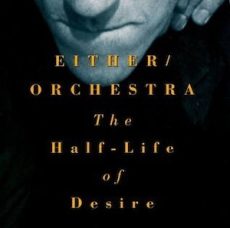
Daily Dose Of Jazz…
Russ Gershon was born on August 11, 1959 and grew up in Westport, Connecticut. He attended Harvard University where he received a degree in philosophy and was a disc jockey, jazz director and station manager at Harvard’s WHRB radio station. He attended Berklee College of Music for a year in 1984 and the following year the Either/Orchestra played its first live show at the Cambridge Public Library.
Founding Accurate Records he has released albums by Morphine, Medeski Martin & Wood, the Alloy Orchestra, Ghost Train Orchestra, the Either/Orchestra, Dominique Eade, and Garrison Fewell. He has been a member of rock bands and has worked as a studio musician as well as performing in Boston, Massachusetts.
In 1997 Russ played arrangements of Ethiopian popular music with the Either/Orchestra. This drew the attention of Francis Falceto, who produced the “Éthiopiques” series of albums to document 20th century Ethiopian music. Through Falceto’s connections his band were invited to Addis Ababa in 2004 and became the first American big band to perform in Ethiopia since Duke Ellington’s in 1973.Their principal concert was released as the album Ethiopiques 20: Live in Addis and led to working with Ethiopian musicians such as Mahmoud Ahmed, and appeared with Ahmed’s band at Carnegie Hall in 2016.
Saxophonist, flutist, composer, and arranger Russ Gershon continues to perform with the Either/Orchestra.
More Posts: arranger,bandleader,composer,flute,history,instrumental,jazz,music,saxophone
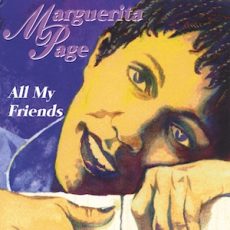
Daily Dose Of Jazz…
Marguerita Page was born on August 10, 1950 in Clarksville, Tennessee and first sang in church. At the same time, absorbing the sounds of the blues and R&B, her saxophonist father introduced her to jazz.
Marguerita’s mature style blends her gospel and blues roots with jazz in an elegant original way. She has written lyrics to the works of Charlie Parker and Wes Montgomery. Her 1995 debut release All My Friends features saxophonist Charles McPherson.
Moving to California, Page performed as soloist and director of the One Human Family Community Choir, at the Idyllwyld Jazz Festival and at On Broadway in San Diego. She has been featured on television, is writing music to some of the sacred scriptures of the Baha’i Faith and recording a soundtrack for an interactive autobiography titled The Dawn At My Back by San Diego State University professor Carroll Blue.
Back in Tennessee, Marguerita’s current projects and performances feature pianist/songwriter Will Barrow. Vocalist, composer, voice teacher, and choir director Marguerita Page continues to perform and record.
More Posts: bandleader,history,instrumental,jazz,music,vocal
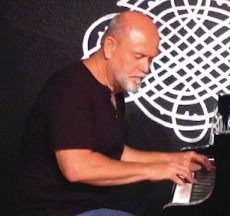
Daily Dose Of Jazz…
D C DowDell was born on August 9, 1951 in Southern California and studied Music Education at UCLA and earned a Masters of Music Composition at University of North Texas. He has been influenced by Bill Evans, Keith Jarrett, Kenny Baron and Herbie Hancock. His style and piano technique blends the fine inner voicings of modal with the highly energetic impressions of the avante garde.
He has appeared with Bobby Vinton, Marilyn McCoo and Rosemary Clooney just to name a few. His passion for jazz led him to composing and arranging charts for top vocalists, solo instrumental artists and orchestra. His influences are Gil Evans, Bob Florence and George Russell.
Pianist D C DowDell moved to Ocean Beach, California where he continually plays locally with jazz ensembles and teaches jazz theory and composition at A Passion for Jazz! Music Studios. He first published his Basic Musicianship in 1993, a primary music reference and theory text.
More Posts: arranger,bandleader,composer,educator,history,instrumental,jazz,music,piano
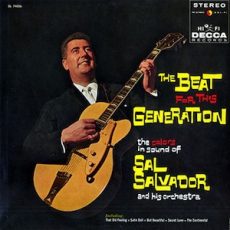
Daily Dose Of Jazz…
Vinnie Dean was born Vincent Nicholas diVittorio on August 8, 1929 in Mount Vernon, New York. He was primarily an alto saxophonist, but also played flute and piccolo.
After World War II he played in New York City with Shorty Sherock and Johnny Bothwell, and recorded with Charlie Spivak and Charlie Barnet in the late 1940s. The 1950s saw him playing with Elliot Lawrence, Stan Kenton, Ralph Burns, and Eddie Bert, recording with all of them.
He was less active from the late-1950s, but still performed or recorded later in his career with Hal McKusick, Ray McKinley, Urbie Green, Sal Salvador, and Benny Goodman, as well as returning to play with Lawrence and Barnet.
From the 1960s onward he was involved in the music business, operating a publishing outlet, a booking agency, a recording studio, and a vinyl shop. Alto saxophonist Vinnie Dean died in Danbury, Connecticut on September 14, 2010 at the age of 81.
More Posts: flute,history,instrumental,jazz,music,piccolo,saxophone
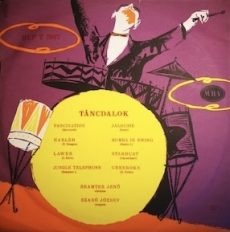
Daily Dose Of Jazz…
Jeno Beamter was born on August 7, 1912 in Budapest, Hungary. Graduating from high school in 1930 he was already trained as a drummer at the age of seven, although he was taught to play the violin. He completed his musical studies privately. From 1930 , he was taught to play the drums by Vilmos Roubal, a member of the Opera House. He soon began to play the vibraphone.
From 1933 he played in various bands, Bubi Vibraphone Ensemble, Solymossy–Beamter Duo, Ernő Vécsey Ensemble, Martiny Band, and Szabó–Beamter Duo. He made his first recordings with the Smiling Boys band.
The various jazz formations of Jenő Horváth’s Radiola Band, the Herrer band, the Durium band, Tabányi and its soloists, János Gaál Gyulai’s small band, and the Deák Big Band were the prominent bands in which he played. He made guest appearances in Austria, Switzerland, the GDR, England, and Yugoslavia.
In the 1970s, he performed with Barbra Streisand and Frank Sinatra in a joint show at the Kennedy Center. Jeno performed live with Tabányi on Hungarian Radio for fifteen years, almost every Sunday.
Drummer, vibraphonist, composer and educator Jeno Beamter, who performed in the traditional, modern and was one of the legendary figures of Hungarian swing music, died on January 11, 1984 in the city of his birth.
More Posts: composer,drums,educator,history,instrumental,jazz,music,vibraphone


